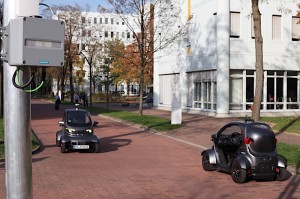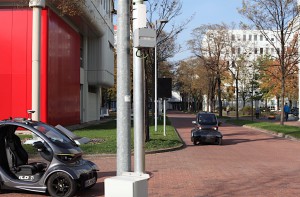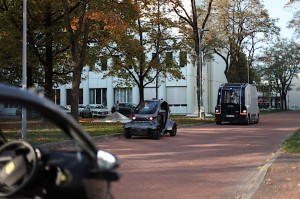
Siemens has jumped into the autonomous vehicle business, converting its Munich campus into a testing facility.
Siemens Mobility, along with five partners, is launching a test of connected and autonomous driving at the company’s Munich research campus to test and refine intelligent infrastructure, cloud-based software service and automated electric vehicles.
“Our research project is another milestone to serving the so-called first and last mile in a multimodal mobility mix that includes autonomous vehicles,” said Michael Peter, CEO of Siemens Mobility.
“Our infrastructure is a critically important component for providing secure and efficient on-demand transportation in urban and rural areas,” he said.
Working with five partners, Siemens’s research will use a field test route that runs through the campus and enables traffic simulation in a variety of real-life situations. Two types of vehicles will be used to research the interaction of intelligent infrastructure and vehicles: a highly automated single-seat car and a shuttle bus.
(GM asks for relief on fuel rules, bets big on EVs. Click Here for the story.)
The research project will bring together experts from:
- The Institute for Climate Protection, Energy and Mobility, which manages legal issues relating to autonomous driving and, together with Siemens, researches operator and business models that are derived from technical developments;
- IAV is developing a prototype for barrier-free, autonomously operating shuttles;
- Technical University of Munich, which is using microscopic simulations to study the impact of different forms of autonomous driving on traffic;
- UTB Projektmanagement, a Berlin-based project development bureau, is investigating how people react to autonomous vehicles and how technological developments must take this into account; and
- Emm Solutions, a provider of highly automated ILO1 electric vehicle to help improve monitoring the environment, the vehicle’s geopositioning, and communication management between vehicle and infrastructure.
Siemens Mobility is responsible for overall project integration, as well as the roadside infrastructure and cloud-based software services. It will also evaluate various potential business and operating models.
(Click Here for more about Nvidia’s new processor for automotive applications.)
For Siemens, the mobility unit represents something of a return to the automotive sector, which it left in 2007 when it sold its automotive electronics business to Continental. The old Siemens/VDO unit, with its growing portfolio of electronic and driver assistance technologies, now serves as the hub of Continental’s self-driving vehicles.
For the Munich tests, utility poles along the route have been equipped with laser scanners, radar units and cameras to monitor the overall traffic environment and precisely locate the vehicles.
The project, ‘Optimized transport system based on autonomous driving electric vehicles’, is funded by Germany’s Federal Ministry for the Environment, Nature Conservation and Reactor Security, and aims to develop a system that provides autonomous driving options for the often neglected first and last mile of a journey.
Throughout the project, the partners will demonstrate how connected and autonomous electric vehicles can improve road safety and efficiency while operating at the highest Level 5 autonomy, with no driver intervention.
Siemens’s intelligent infrastructure will continually feed the test vehicles with comprehensive information, such as general traffic conditions and data about other vehicles operating along the route.
(To see more about Nvidia, Continental partnering on autonomous technology, Click Here.)
The approach will support the CAEVs in complex traffic situations and difficult to monitor areas, such as under hostile weather conditions, and will significantly expand their monitored operating radius.


